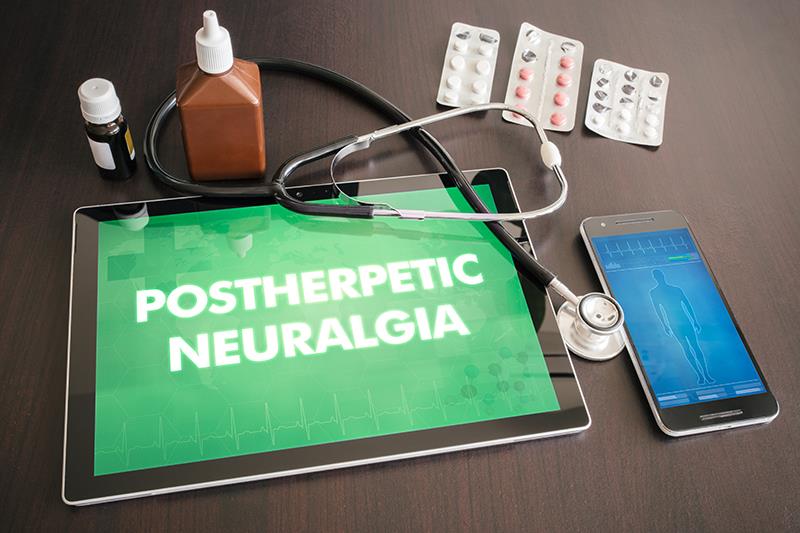Crisugabalin for postherpetic neuralgia scores high in phase III trial





The oral calcium channel α2δ-1 subunit ligand crisugabalin appears to provide relief for patients with postherpetic neuralgia, significantly reducing average daily pain scores as compared with placebo, as shown in a phase III trial.
After 12 weeks of treatment, average daily pain scores on the 11-point Numeric Pain Rating Scale (NPRS) decreased by −2.2 and–2.6 with crisugabalin 40 mg/d and 80 mg/d, respectively, as opposed to –1.1 with placebo. The corresponding least squares mean difference of –1.1 (95 percent confidence interval [CI], −1.6 to −0.7) and −1.5 (95 percent CI, −2.0 to −1.0) was statistically significant (p<0.001). [JAMA Dermatol 2024;doi:10.1001/jamadermatol.2024.3410]
The result was consistent regardless of the patients’ average daily pain scores at baseline (<6 or ≥6), the investigators noted.
Significantly more patients in the crisugabalin arms than in the placebo arm achieved at least a 30-percent reduction (61.2 percent with 40 mg/d and 54.5 percent with 80 mg/d vs 35.5 percent; p<0.001 for both) or at least a 50-percent reduction in average daily pain scores (37.2 percent with 40 mg/d vs 38.0 percent with 80 mg/d vs 20.2 percent; p=0.002 and p<0.001, respectively).
Crisugabalin was associated with threefold greater odds of having at least a 30-percent reduction (40 mg/d: odds ratio [OR], 3.58, 95 percent CI, 1.90–6.76; 80 mg/d: OR, 2.93, 95 percent CI, 1.58–5.44) or a 50-percent reduction in average daily pain scores (40 mg/d: OR, 3.03, 95 percent CI, 1.50–6.13; 80 mg/d: OR, 3.84, 95 percent CI, 1.88–7.87).
Other pain measures
“To minimize the bias of subjective pain evaluation, we evaluated pain intensity using different pain scales to corroborate and support the findings of the primary efficacy measure,” the investigators said.
Crisugabalin at either dosing level yielded significant reductions in the Short-Form McGill Pain Questionnaire (SF-MPQ) visual analogue scale (VAS), the SF-MPQ Pain Rating Index (PRI), and all three subscales of the SF-MPQ Present Pain Intensity (ie, sensory, affective, and total scores) compared with placebo at week 12, with the benefit seen through the end of the subsequent 14-week open-label treatment at week 26 where all patients who entered the extension phase received crisugabalin 80 mg/d. This finding, according to the investigators, indicates that crisugabalin not only reduces pain intensity but also modulates the perception of pain.
Sleep and quality of life
“Sleep disturbance, a frequent comorbidity of postherpetic neuralgia, aggravates and is also aggravated by pain outcomes. Crisugabalin significantly improved sleep function, with notable reductions in Average Daily Sleep Interference Scale (ADSIS) at week 12,” the investigators said.
Specifically, the least square mean difference in ADSIS scores at week 12 relative to placebo was −2.3 and −2.9 with crisugabalin 40 and 80 mg/d.
The investigators also stressed that health-related quality of life (HR-QoL) measures are becoming increasingly important for evaluating the benefit of interventions for neuropathic pain. In the present trial, crisugabalin at both dosing levels was associated with significant improvements across the 5 dimensions in EQ-5D-5L (ie, mobility, self-care, usual activities, pain/discomfort, and anxiety/depression), indicating improved overall health status of the patients.
“EQ-5D-5L represents patients’ perspectives on the effectiveness of treatment and overall health status, while average daily pain scores and ADSIS measure specific health issues like pain intensity and sleep interference,” they explained.
Safety
“Crisugabalin had an overall acceptable safety profile and was well tolerated,” according to the investigators.
Any-grade treatment-emergent adverse events (TEAEs) occurred in 65.0 percent and 76.2 percent of patients in the crisugabalin 40 and 80 mg/d arms, respectively, and in 63.7 of those in the placebo arm during the double-blind treatment. TEAEs led to treatment discontinuation in three, two, and one patient in the respective arms. Finally, four patients in each arm had serious TEAEs.
In terms of treatment-related adverse events (TRAEs), 32.5 percent and 53.3 percent of patients in the crisugabalin 40 and 80 mg/d arms, respectively, and 29.0 percent of those in the placebo arm had any-grade TRAEs. Only one patient who received crisugabalin at a lower dose level had serious TRAE.
As for the safety profile during the open-label treatment, the rate of any-grade TEAEs was 68.9 percent, that of serious TEAEs was 5.3 percent, and that of any-grade TRAEs was 40.9 percent. TEAEs led to treatment discontinuation in four patients (1.5 percent). No serious TRAEs or deaths were documented.
Taken together, the findings show that crisugabalin may be useful for treating herpetic neuralgia, with the additional advantage of flexibility in dosing, with options of 40 or 80 mg/d, depending on individual patient response and tolerability, the investigators said.
The phase III trial included 366 herpetic neuralgia patients (median age 63.0 years, 52.7 percent male) with an average daily pain score of at least 4 on the 11-point Numeric Pain Rating Scale over the preceding week. Those with pain not controlled by prior therapy with pregabalin (≥300 mg/d) or gabapentin (≥1,200 mg/d) were excluded. The included patients were randomly assigned to receive crisugabalin at either 40 mg/d (n=121) or 80 mg/d (n=121) or placebo (n=124) for 12 weeks.
A total of 250 patients entered the open-label extension phase, wherein all received crisugabalin 80 mg/d for 14 weeks.